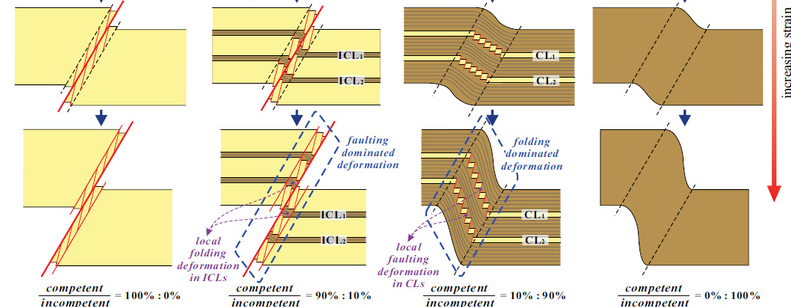Yangwen Pei, Douglas A. Paton, Rob J. Knipe, Kongyou Wu
A review of fault sealing behaviour and its evaluation in siliciclastic rocks
Earth-Science Reviews (2015 IF.7.885),
Volume 150, 2015, Pages 121-138, ISSN 0012-8252,
https://doi.org/10.1016/j.earscirev.2015.07.011
Abstract: Faults can be either conduits or retarders for fluid flow. As the presence of faults increases the risks for hydrocarbon exploration, the sealing behaviour of a fault zone has been a focus for geological studies in the past 30years. Due to the widespread occurrence of fault zones, either in extensional or contractional regimes, knowledge about the fault sealing behaviour is of great importance to a wide spectrum of disciplines in geosciences, for instance, structural geology, geochemistry, petroleum geology, etc. Geologists have extensively studied the sealing properties of a fault zone over the last decades, ranging from fault zone architecture, fault seal types, fault seal processes, fault rock classification, research methods and controlling factors. Although there have not been universal agreements reached on the fault seal classifications, two types of fault seals have already been recognised, which are juxtaposition seals and fault rock seals. The early foundation of Allan map and triangle juxtaposition diagram allows the investigation on the effects of stratigraphic juxtaposition between hanging wall and footwall on the sealing properties of a fault zone. The study on the detailed fault zone architecture also implies the importance of fault arrays that increase the complexity of overall stratigraphic juxtaposition between hanging wall and footwall. The fault seal processes and their generated fault rocks play an important control on sealing properties of a fault zone. Temperature and stress history, which are closely related to burial history, are also found to control the sealing capacity of a fault zone to some extent. The methods such as stratigraphic juxtaposition, clay smear indices, microstructural analysis and petrophysical assessment have significantly boosted the research of fault sealing behaviour. However, further research is still needed to increase the effectiveness of present fault seal analysis.


